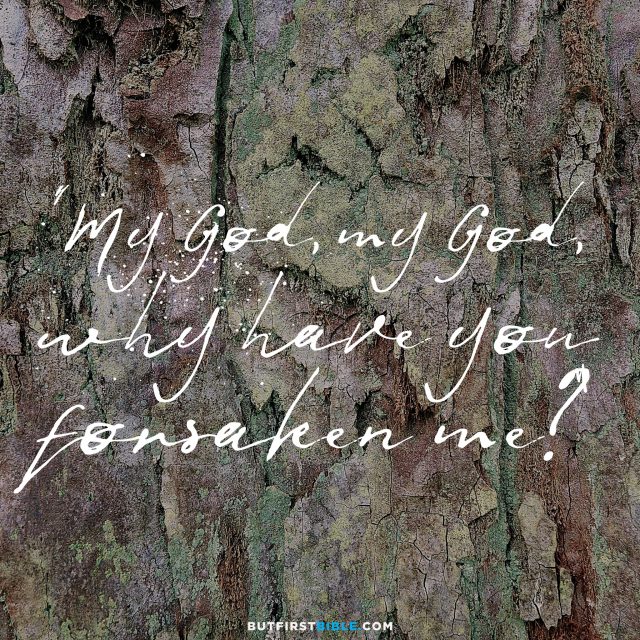
Welcome to the “But first, Bible” daily devotional podcast with Dave Miers.
Our readings for today are Leviticus 18-19 and Matthew 27:32-66.
Today we will reflect upon the moment that the whole of Matthew’s gospel has been leading up to: the death of Jesus on the cross.
We will focus on a few verses from Matthew 27, but we will also refer back to yesterday’s Leviticus 16 reading to show how the Day of Atonement is a shadow of the events that are to come in Jesus’ death on the cross.
Let me begin by reading from Matthew 27:45–46,
[45] Now from the sixth hour there was darkness over all the land until the ninth hour. [46] And about the ninth hour Jesus cried out with a loud voice, saying, “Eli, Eli, lema sabachthani?” that is, “My God, my God, why have you forsaken me?” (ESV)
Darkness over the land at midday is not normal. Something supernatural was taking place. In the Bible light is a symbol of God’s blessing and darkness is a symbol of God’s judgement. The darkness that descends is a physical picture of the spiritual reality that is taking place at the cross. Jesus quotes Psalm 22 saying, “My God, my God, why have you forsaken me?”
God is acting in judgement and Jesus is being forsaken. What does that mean? This is an emphasis not just on the physical pain of crucifixion – verse 35 simply says ’they had crucified him’, but on the spiritual pain of THIS crucifixion. We’ve already seen back in Matthew 26 when Jesus prayed in Gethsemane that his soul was sorrowful even to death at the contemplation of drinking the cup of God’s wrath at the cross.
John Calvin said this about the spiritual death of Jesus,
“If Christ had died only a bodily death, it would have been ineffectual… Unless his soul shared in the punishment, he would have been the Redeemer of bodies alone. [In consequence] he paid a greater and more excellent price in suffering in his soul the terrible torments of a condemned and forsaken man.” (John Calvin)
How does this relate to Leviticus? Leviticus describes all sorts of regular blood sacrifices that needed to be made for sin. This taught God’s people that sin was really serious, that God was rightly angry about it, that blood was needed to deal with it, and that God is gracious in providing a way.
Yesterday in Leviticus 16 we read of an annual event called The Day of Atonement. On this day Israel’s sin was dealt with, they were cleansed of their sin. This happened as God’s anger at their sin was turned aside from them and placed upon innocent animals.
Of all the ceremonies that happened on that day, the focal point was on two goats. Picture them for a moment, these two goats – without blemish, without sin – they were brought to the High Priest in the temple.
The first goat was killed. The High Priest stabs the goat, slit open its throat, and there is blood everywhere. The goat was sacrificed in the place of Nation Israel taking the penalty for Israel’s sin.
With the second goat – the scapegoat – the High Priest placed his hands on its head and confessed the sin of Israel upon it. Their sin transferred to the scapegoat then it was lead out into the wilderness, to die. This was symbolic of sin being taking away. As the sin is removed the people are cleansed.
God’s anger is turned aside from Israel and placed upon these two goats. These two goats were pointing forward to the wrath-bearing death of Jesus.
Jesus is only one of whom it can be said: he was without sin! He is the innocent one, he is pure and without blemish. As Jesus’ blood was shed like that first goat: He was dying in our place for our sin and He was dying the death we deserve.
In the events of the cross, like that second goat, it’s as if our hands were placed upon his head. Our sin, our guilt, our shame, our punishment, God’s anger, it was all transferred to him and then taken away.
Have a look with me at Matthew 27:50–51
[50] And Jesus cried out again with a loud voice and yielded up his spirit. [51] And behold, the curtain of the temple was torn in two, from top to bottom. And the earth shook, and the rocks were split. (ESV)
Jesus has died. And immediately the curtain of the temple on the other side of the city is torn from top to bottom. The curtain in the temple separated sinful people from a Holy God, but now in the death of Jesus that curtain has been torn down. It is now possible to be accepted by God!
This is THE day of atonement that is far better than the days of atonement that needed to be repeated each year like in Leviticus 16. We spent time on February 8 thinking about atonement. It means to be at-one with God.
The centurion who was standing by Jesus when he died was able to say after watching these events unfold, “Truly this was the Son of God!”
See and savour, this day, the death of Jesus Christ – the Son of God. Know that through his sacrificial death you can have your sins atoned for and be at-one with God.
Until tomorrow, keep trusting Jesus.
